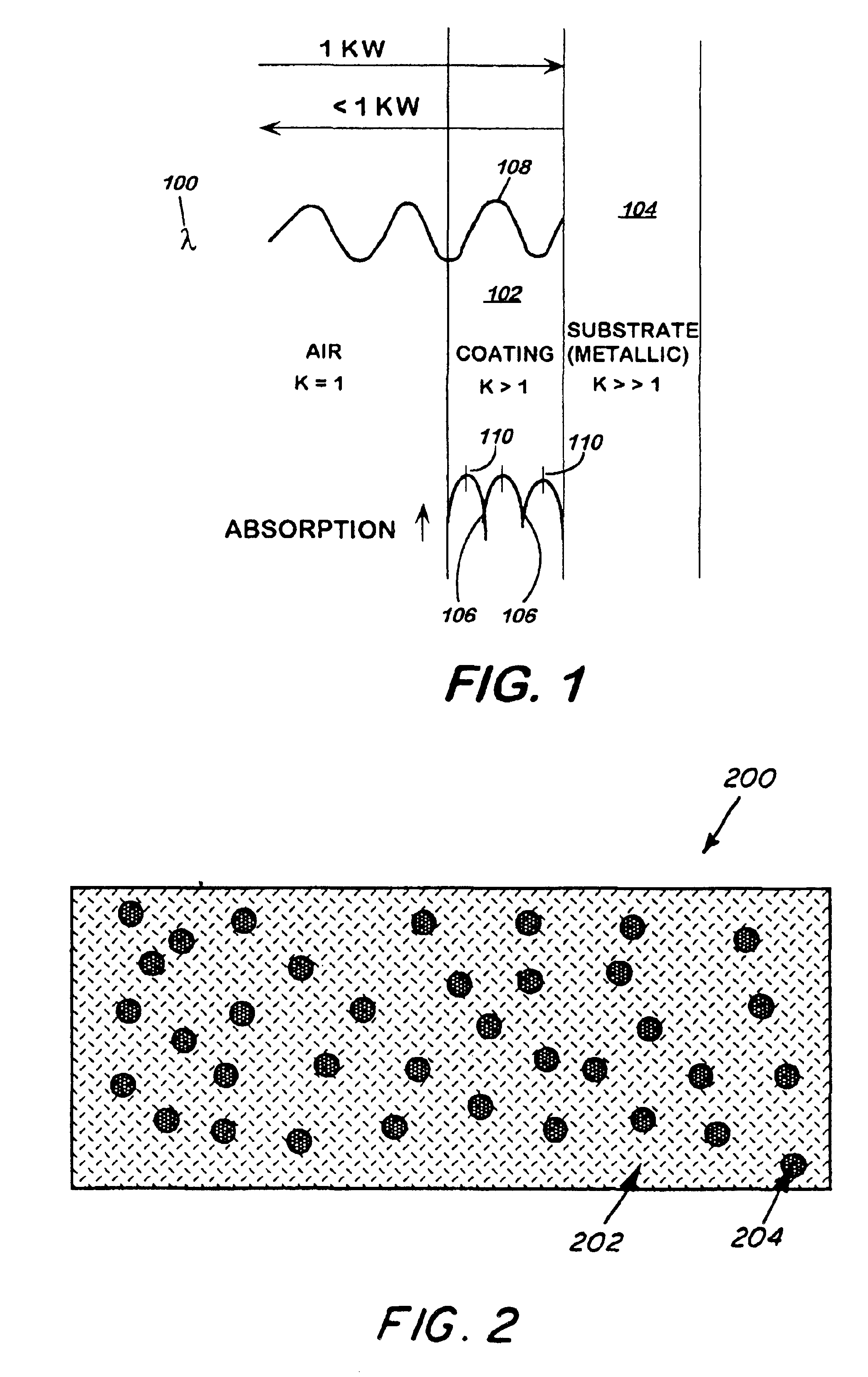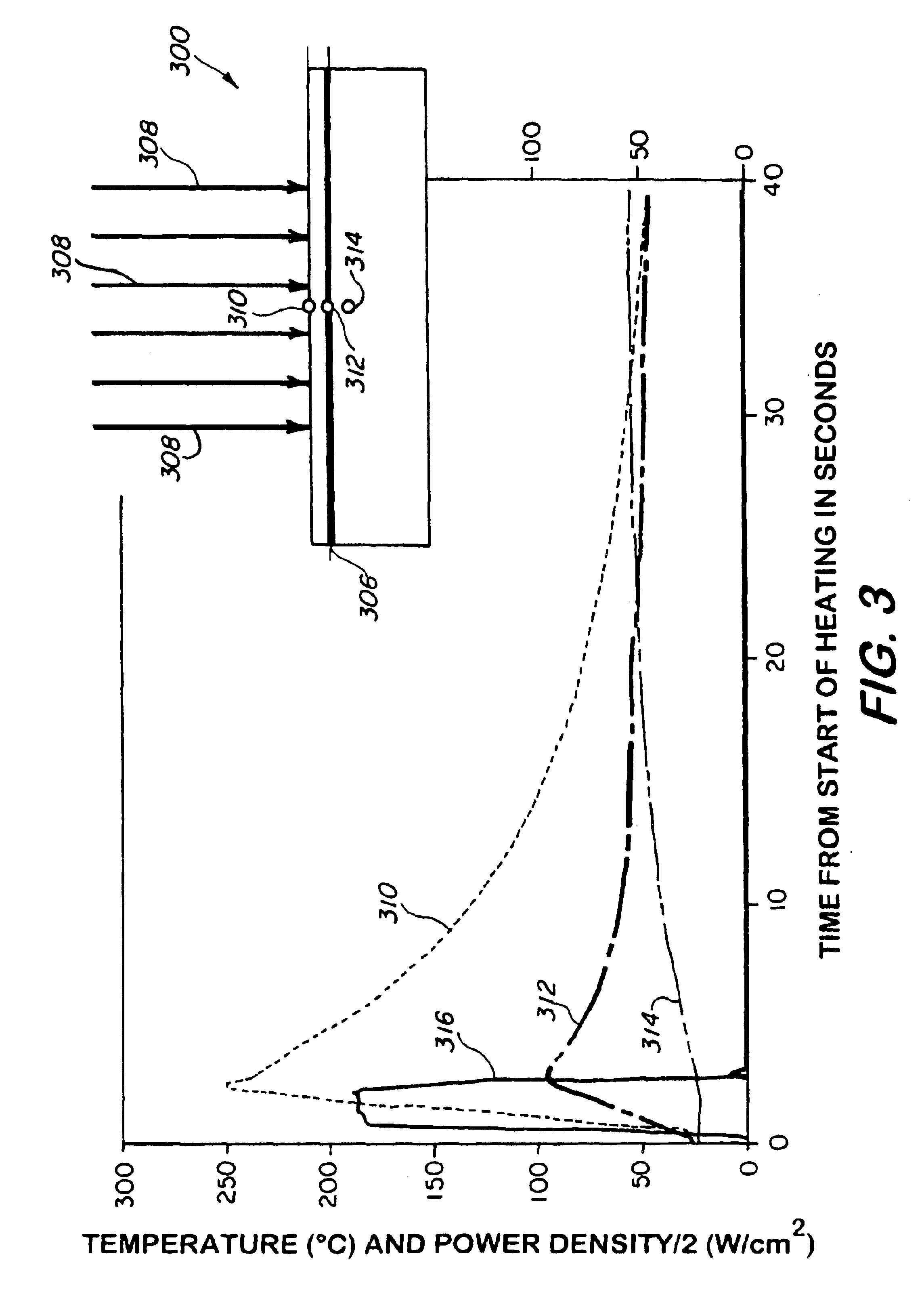Removing radar absorbing coatings
a radar and coating technology, applied in the direction of electric/magnetic/electromagnetic heating, nuclear engineering, liquid cleaning, etc., can solve the problems of large amount of carbon dioxide emissions, large volume of waste products, and ineffective mechanical abrasion of rubbery polymer coatings, etc., to minimize or eliminate thermal and mechanical damage to substrates, the effect of reducing the production of volatile compounds
- Summary
- Abstract
- Description
- Claims
- Application Information
AI Technical Summary
Benefits of technology
Problems solved by technology
Method used
Image
Examples
example 2
This example demonstrates decomposition of a radar absorbing coating composed of a urethane rubber filled with iron filler particles disposed on a substrate composed of an aluminum foil and a fiberglass reinforced polyester composite by means of high frequency microwave energy. These type of coatings are primarily used on aircraft and are intended to absorb high frequency microwaves of about 30-100 G Hz.
A commercially prepared radar absorbing coating layer composed about 5% by volume iron silicide filler in a urethane rubber about 1 mm thick, was bonded to a fiberglass reinforced polyester composite substrate about 5 mm thick using a high strength two-part epoxy adhesive and an intermediate 12 micron thick aluminum foil ground plane between the urethane coating and the composite. The composite and the aluminum foil comprised the substrate. Thermocouples were placed on the front surface of the coating, between coating and the aluminum foil bonded to the composite, and at a location a...
PUM
| Property | Measurement | Unit |
|---|---|---|
| wavelength | aaaaa | aaaaa |
| dielectric constant | aaaaa | aaaaa |
| thickness | aaaaa | aaaaa |
Abstract
Description
Claims
Application Information
 Login to View More
Login to View More - R&D
- Intellectual Property
- Life Sciences
- Materials
- Tech Scout
- Unparalleled Data Quality
- Higher Quality Content
- 60% Fewer Hallucinations
Browse by: Latest US Patents, China's latest patents, Technical Efficacy Thesaurus, Application Domain, Technology Topic, Popular Technical Reports.
© 2025 PatSnap. All rights reserved.Legal|Privacy policy|Modern Slavery Act Transparency Statement|Sitemap|About US| Contact US: help@patsnap.com



